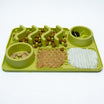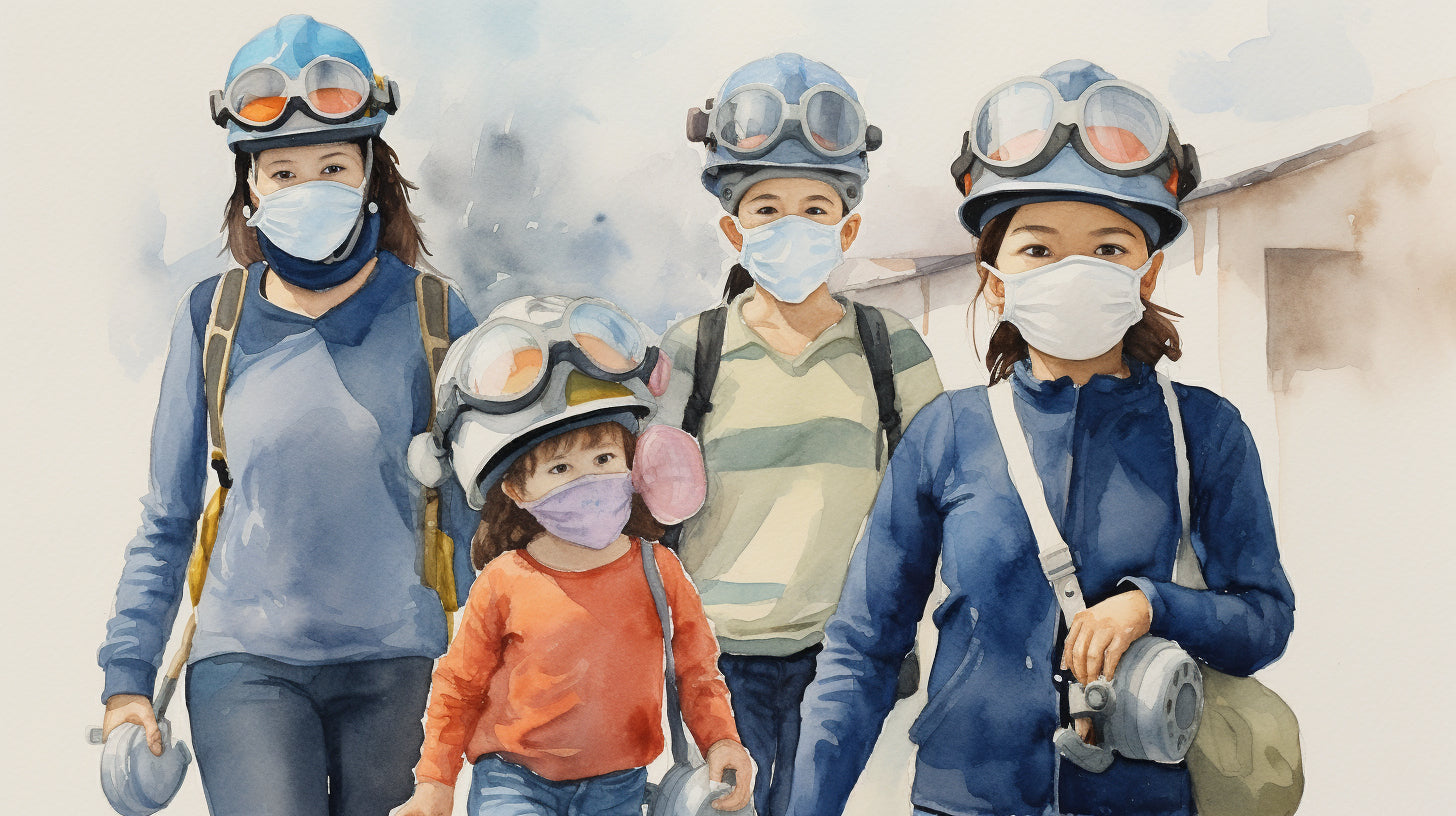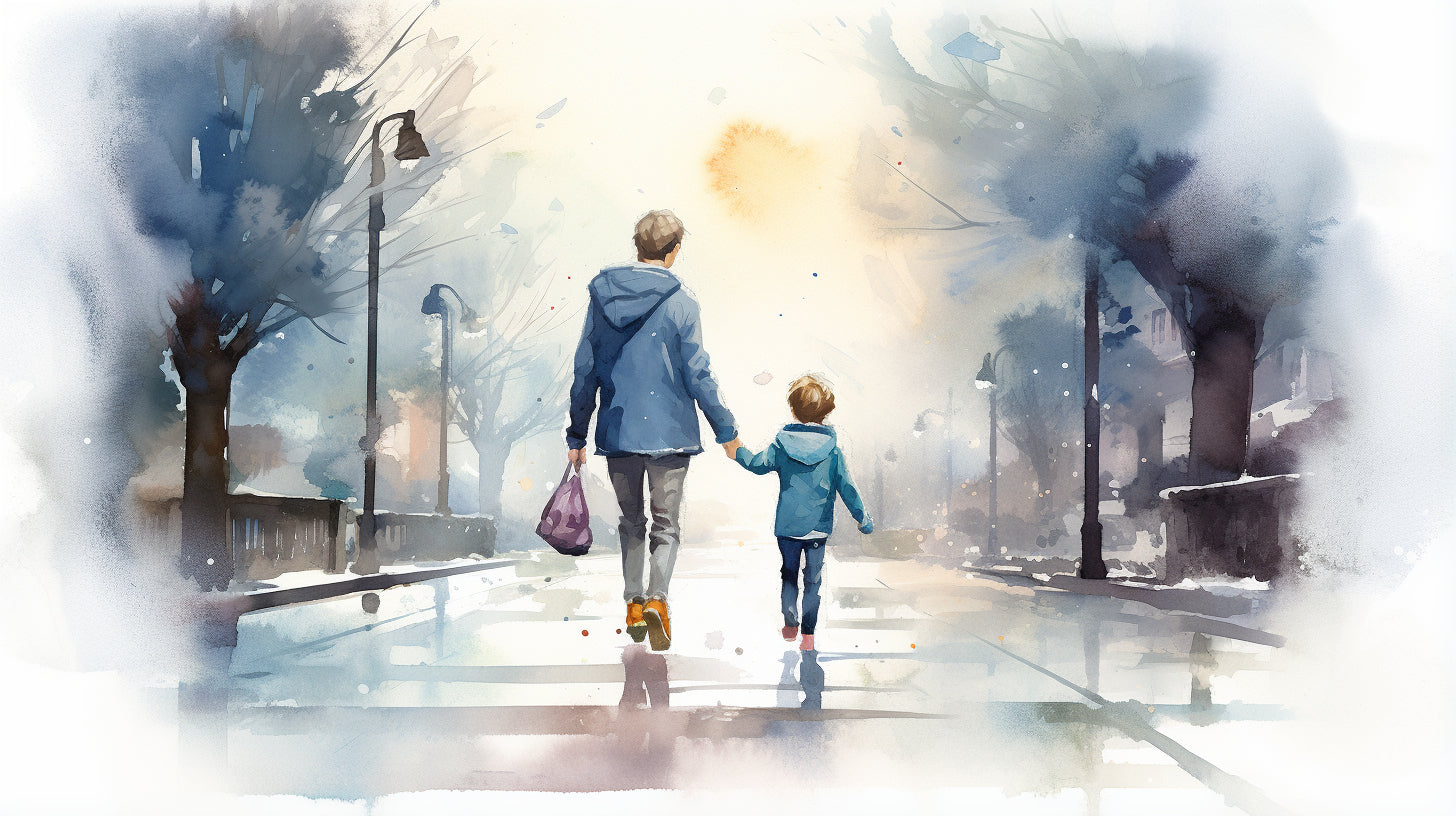Teaching Children about Stranger Danger
When it comes to outdoor safety, one of the most important things we can teach our children is how to recognize and handle situations involving strangers. As stay-at-home moms, it's our responsibility to ensure the safety of our children when they are playing outside. Here are some key tips and recommendations for teaching children about stranger danger:
- Open communication: Encourage open and honest communication with your children. Let them know that they can always come to you if they feel uncomfortable or encounter a stranger.
- Define "stranger": Teach your children that a stranger is someone they don't know. It's important to explain that not all strangers are dangerous, but they should always be cautious and aware of their surroundings.
- Roleplay scenarios: Roleplay different situations with your child to help them practice how to respond to strangers. For example, teach them that it's okay to say "no" and walk away if a stranger approaches them.
- Trust their instincts: Teach your child to trust their instincts. If they feel uneasy or uncomfortable around someone, they should listen to that feeling and find a trusted adult.
- Identify safe adults: Help your child identify safe adults in their community, such as police officers, firefighters, or teachers. Let them know that these are people they can turn to if they need help.
Remember, teaching children about stranger danger is an ongoing conversation. As they grow older, their understanding of the topic will evolve, and it's important to revisit these concepts regularly. By instilling these safety measures early on, you are setting a strong foundation for your child's outdoor safety.
Pro tip: Encourage your child to use the "buddy system" when playing outside. Having a friend with them can provide an extra layer of security and support.
Supervision of Outdoor Playtime
When it comes to maximizing outdoor safety for stay-at-home moms, one of the most important aspects is the supervision of outdoor playtime. As a parent, it is crucial to always keep an eye on your children when they are playing outside to prevent accidents and injuries. Here are some tips to help you ensure their safety:
Always be present
- It is essential to be physically present while your children are playing outside. Avoid distractions like phone calls and chores that might take your focus away from their activities.
- Engage with your children during playtime. This not only ensures their safety but also strengthens your bond and allows you to monitor their actions closely.
Create a safe play area
- Set up an outdoor play area where you can easily see and hear your children. Clear any obstacles or hazards from this area to minimize the risk of accidents.
- Install safety gates or fences around the play area to prevent children from wandering off to potentially dangerous locations.
Be aware of their surroundings
- Familiarize yourself with the outdoor environment where your children play. Identify potential hazards such as sharp objects, steep slopes, or bodies of water.
- Regularly inspect the play area for any broken equipment, loose bolts, or other safety concerns. Repair or replace any damaged items promptly.
Educate your children about outdoor safety
- Teach your children about basic safety rules during outdoor playtime, such as not playing near the road, avoiding strangers, and being careful around unfamiliar animals.
- Encourage open communication, so your children feel comfortable reporting any concerns or incidents that occur while playing outside.
Use technology to your advantage
- Consider using outdoor security cameras or baby monitors to keep an eye on your children while they are playing in the yard. This can provide an additional layer of supervision and peace of mind.
Remember, supervision is the key when it comes to outdoor playtime. You are your child's first line of defense, so be vigilant and proactive in ensuring their safety while they enjoy the great outdoors.
"No amount of sophistication is going to allay the fact that all your knowledge is about the past and all your decisions are about the future." - Ian Wilson
Establishment of Clear Rules and Boundaries
As a stay-at-home mom, it's your responsibility to ensure the safety of your children, especially when they're playing outside. Establishing clear rules and boundaries for outdoor activities is key to keeping your kids safe. Here are some important tips to help you create a safe and secure environment for your children:
- Set age-appropriate boundaries: Determine the specific areas where your children are allowed to play. For younger children, you may want to limit their play area to the backyard. As they get older, you can gradually expand their boundaries to include nearby parks or playgrounds.
- Define playtime hours: Establish specific times when your children can play outside. This will help you keep track of their activities and ensure that they're not playing unsupervised or during unsafe hours.
- Outline safety rules: Clearly communicate the rules your children need to follow when playing outside. These rules can include instructions to always stay within designated boundaries, not to talk to strangers, and not to engage in unsafe activities like climbing trees without adult supervision.
- Enforce consequences: Make sure your children understand the consequences of breaking the rules. This may involve temporarily suspending outdoor playtime or implementing other appropriate disciplinary actions. Consistency is key to ensuring that the rules are taken seriously.
- Communicate with other caregivers: If your children spend time at a daycare or with a nanny, ensure that they're aware of the rules and boundaries you have established. Consistency across all caregiving environments will help reinforce the importance of safety.
- Regularly review and update: As your children grow and their needs change, it's important to review and update the rules and boundaries. This can help address any new safety concerns or allow for increased independence as your children demonstrate responsible behavior.
Remember, the establishment of clear rules and boundaries is not meant to restrict your children's freedom, but rather to ensure their safety and well-being. By setting these guidelines, you can provide them with the freedom to explore and play while also instilling important safety habits.
Additional Resources:
- Outdoor Safety for Stay-at-Home Moms: Top Tips to Keep Your Family Secure
- Outdoor Safety Essentials for Stay-at-Home Moms: Must-Know Tips
Implementing the Buddy System
When it comes to outdoor safety for stay-at-home moms, one effective strategy is implementing the buddy system. The buddy system ensures that your child always has someone to watch out for them while playing outside, providing an extra layer of security and peace of mind. By encouraging your child to have a buddy, you are promoting a sense of responsibility, teamwork, and mutual care. Here's how you can implement the buddy system effectively:
1. Explain the Concept to Your Child
Start by explaining the concept of the buddy system to your child in a simple and easy-to-understand manner. Emphasize the importance of looking out for one another and being there to lend a helping hand. Encourage them to choose a reliable and trustworthy friend or sibling to be their buddy.
2. Establish Clear Guidelines
Set clear guidelines for your child and their buddy to follow while playing outside. These guidelines should include rules such as always staying together, watching out for each other, and never going off alone without informing a trusted adult. Make sure both children understand the rules and the consequences of breaking them.
3. Encourage Open Communication
Promote open communication between your child and their buddy. Ensure they feel comfortable talking to each other about any concerns, worries, or potential dangers they may come across. Encourage them to report any unsafe situations to you or another responsible adult immediately.
4. Regular Check-ins
Make it a habit to check in with your child and their buddy periodically while they are playing outside. This can be done by physically going outside to see how they're doing or by using a nearby window or balcony to keep an eye on them. Regular check-ins will help ensure that the buddy system is working effectively and that everyone is safe.
5. Encourage Supportive Behaviors
Teach your child and their buddy to look out for each other and offer support when needed. Encourage them to help each other with tasks, share resources, and be there for one another in case of accidents or emergencies. By promoting supportive behaviors, you are fostering a sense of camaraderie and teamwork.
6. Teach Problem-Solving Skills
Empower your child and their buddy with problem-solving skills. Teach them how to assess situations, make safe decisions, and handle minor conflicts on their own. Equipping them with these skills will help build their independence and resilience while ensuring their safety.
Implementing the buddy system is an effective way to enhance your child's outdoor safety. By encouraging them to have a buddy, you are instilling important values of responsibility and watchfulness. So, empower your child to make safe choices, nurture their friendships, and have fun while playing outdoors!
"The buddy system provides an extra layer of security and promotes a sense of responsibility, teamwork, and mutual care."
Road Safety Education for Kids
As a stay-at-home mom, one of the most important things you can do to ensure your child's safety is to teach them about road safety. Whether they are walking to school, riding their bike, or simply playing outside, understanding how to navigate the streets safely is crucial. Here are some key tips for road safety education for kids:
- Look both ways before crossing: Teach your children the importance of looking left, right, and left again before crossing the street. Emphasize the need to wait for traffic to come to a complete stop before crossing.
- Use designated crosswalks: Teach your children to use designated crosswalks when crossing the street. Remind them that drivers are more likely to expect pedestrians at these marked areas.
- Follow traffic signals: Teach your children to understand and follow traffic signals, including traffic lights and pedestrian crossing signals. Explain the meaning of each signal and the actions they should take when they encounter them.
- Walk facing traffic when there are no sidewalks: In areas where there are no sidewalks, it's important to teach your children to walk facing oncoming traffic. This allows them to see approaching vehicles and react accordingly.
- Wear bright and reflective clothing: Encourage your children to wear brightly colored or reflective clothing, especially when walking or biking in low-light conditions. This helps increase their visibility to drivers.
- Avoid distractions: Teach your children to avoid distractions while walking or biking near the road. This includes using electronic devices, listening to loud music, or engaging in activities that take their attention away from their surroundings.
- Set a good example: Children learn by observing their parents, so be a good role model when it comes to road safety. Follow all traffic rules, use crosswalks, and demonstrate safe behavior when walking or biking.
Remember, road safety education is an ongoing process. Revisit these tips regularly and have conversations with your child about safely navigating the streets. By instilling good road safety habits from a young age, you are empowering your child to make responsible decisions and stay safe when they are out and about. Stay proactive and vigilant, and always prioritize your child's safety.
Mental Well-being of Stay-at-home Moms
Being a stay-at-home mom can be a rewarding and fulfilling experience, but it can also be challenging and overwhelming at times. It's essential for moms to prioritize their mental well-being to ensure they are happy and healthy while taking care of their families. Here are some tips to help you maintain your mental well-being as a stay-at-home mom:
1. Practice Gratitude
One way to boost your mental well-being is to practice gratitude. Take a few minutes each day to reflect on the things you are grateful for, whether it's your family, your health, or the little moments of joy that occur throughout the day. Keeping a gratitude journal can be a helpful tool to remind yourself of all the things you have to be thankful for.
2. Prioritize Self-care
It's important for moms to prioritize self-care and make time for activities that bring them joy and relaxation. Whether it's taking a walk, reading a book, or indulging in a hobby, setting aside time for yourself is crucial for your mental well-being. Remember that taking care of yourself is not selfish but necessary to recharge and be the best mom you can be.
3. Connect with Friends
As a stay-at-home mom, it's easy to feel isolated and lonely. Making an effort to connect with other moms can help combat those feelings. Joining a mom's group, attending playdates, or even reaching out to friends for a coffee date can provide a much-needed support system and help you feel less alone in your journey.
4. Seek Support
Don't hesitate to reach out for support when needed. Whether it's talking to your spouse, a trusted family member, or a therapist, seeking support can be instrumental in maintaining your mental well-being. Having someone to talk to and lean on can provide perspective, validation, and a much-needed outlet for your emotions.
5. Find Balance
Finding balance in your daily life is essential for your mental well-being. While being a stay-at-home mom is a full-time job, it's crucial to carve out time for yourself and activities outside of motherhood. Setting realistic expectations and boundaries, and learning to say no to additional commitments can help you find that balance and prevent burnout.
Remember, taking care of your mental well-being as a stay-at-home mom is just as important as taking care of your family. By practicing gratitude, prioritizing self-care, connecting with friends, seeking support, and finding balance, you can ensure that you are happy, healthy, and able to give your best to your family. So take some time for yourself, mama - you deserve it!
"Being a stay-at-home mom can be challenging, but it's important to prioritize your mental well-being to ensure you're taking care of yourself. Practice gratitude, prioritize self-care, connect with friends, seek support, and find balance to maintain your mental well-being as a stay-at-home mom."
Sun Protection Measures
When you and your kids spend time outdoors, it's important to prioritize sun protection to keep your family safe from harmful UV rays. Here are some key tips and recommendations to ensure maximum sun protection:
- Wear sunscreen: Applying sunscreen is a crucial step in protecting your skin from the sun's harmful rays. Look for a broad-spectrum sunscreen with an SPF of 30 or higher, and apply it generously to all exposed areas of the body, including the face, neck, ears, and hands. Don't forget to reapply every two hours, or more often if you're sweating or swimming.
- Cover up: Whenever possible, encourage your kids to wear protective clothing that covers their arms and legs. Lightweight, breathable fabrics with a close weave provide better protection than sheer or loosely-woven materials. Wide-brimmed hats are also great for shielding the face, neck, and ears from the sun.
- Seek shade: When the sun is at its strongest, typically between 10 a.m. and 4 p.m., try to seek out shaded areas for outdoor activities. This is especially important for infants and young children whose skin is more sensitive to the sun's rays.
- Sunglasses: Protecting the eyes from UV rays is just as important as protecting the skin. Choose sunglasses with 100% UVA/UVB protection for both you and your children. Look for styles that wrap around the face to minimize exposure from the sides.
- Avoid tanning beds: Tanning beds emit UV radiation, which can be just as damaging to the skin as the sun. Encourage your children to embrace their natural skin color and avoid artificial tanning methods.
- Stay hydrated: Hydration is key when spending time outdoors, especially on hot and sunny days. Make sure everyone drinks plenty of water to stay properly hydrated and cool.
Remember, sun protection measures should be practiced year-round, not just during the summer months. Even on cloudy days, UV rays can still penetrate through the clouds and cause damage to the skin. By following these sun protection tips, you can ensure that your family enjoys their time outdoors while staying safe from the sun's harmful rays. So lather on that sunscreen, put on your shades, and have a sun-safe and fun-filled day!
Addressing Trip Hazards
When it comes to outdoor safety, one crucial aspect that stay-at-home moms need to address is trip hazards. Trip hazards are obstacles or objects that can cause someone to stumble or fall when walking or running. It's important to address trip hazards in your outdoor space to prevent accidents and injuries. Here are some tips to help you identify and address trip hazards around your home:
- Inspect your outdoor areas: Take a close look at your outdoor spaces such as your driveway, pathways, and backyard. Look for any cracks, uneven surfaces, or objects that may pose a tripping hazard. Pay attention to areas where your children often play or run around.
- Repair or replace damaged surfaces: If you spot any cracks or uneven surfaces, it's essential to repair or replace them. Cracked concrete or uneven stones can easily cause someone to trip and fall. Consider hiring a professional to fix any damaged surfaces to ensure they are safe for your family.
- Clear the path: Remove any objects or debris that may obstruct the path around your home. This includes toys, gardening tools, or branches. Make sure the pathways are clear and provide a safe space for your children to walk or run without the risk of tripping.
- Add lighting: Adequate lighting plays a significant role in preventing accidents and tripping hazards, especially during the evening or nighttime. Install outdoor lights along pathways, driveways, and stairs to ensure visibility. Well-lit areas will not only eliminate tripping hazards but also enhance the overall safety of your outdoor space.
- Create a designated play area: Consider designating a specific area in your backyard for your children's playtime. This allows you to concentrate on securing and maintaining that area, ensuring it is free from trip hazards. By creating a safe play zone, you minimize the risk of accidents and injuries.
Remember, addressing trip hazards is not only important for the safety of your children but also for your own well-being. As a stay-at-home mom, it's crucial to create a safe environment where both you and your children can move around freely without the fear of tripping or falling.
By taking the time to address trip hazards, you are proactively minimizing the risk of accidents and injuries. Regular inspections, repairs, and maintaining clear pathways are essential steps towards outdoor safety. Your diligence and attention to detail will help ensure a safe and enjoyable outdoor experience for the whole family.
"Prevention is better than cure, so it's essential to address trip hazards in your outdoor space to prevent accidents and injuries."
Teaching Home Address and Telephone Number
One of the most important safety measures you can take as a stay-at-home mom is to teach your child their home address and telephone number. Having this information memorized can be incredibly valuable in case your child ever gets lost or finds themselves in an emergency situation. Here are some key tips for teaching your child their home address and telephone number:
- Repetition is key: Make it a regular practice to review your home address and telephone number with your child. Incorporate it into their daily routine or dedicate specific time for this activity. The more they hear and recite the information, the more likely they are to remember it.
- Use visual aids: Visual aids can greatly aid in memory retention for children. Write down your home address and telephone number on a card or piece of paper. Display it prominently in your home where your child can see it frequently. You can also create fun mnemonic devices or songs to help them remember the information.
- Practice in different contexts: Help your child understand how their home address and telephone number are relevant in various situations. For example, you can pretend play scenarios where they need to provide their address or phone number to a friendly stranger or emergency personnel. This will reinforce the importance of knowing this information.
- Utilize technology: In today's digital world, you can also leverage technology to help your child remember their home address and telephone number. Consider using educational apps or online games that focus on teaching safety and personal information. These tools can make the learning process more interactive and enjoyable for your child.
Remember, teaching your child their home address and telephone number is not a one-time activity. It requires consistent reinforcement and practice. Regularly quiz your child on the information to ensure they can recall it confidently. This simple yet essential knowledge can empower your child to stay safe and find their way home if they ever need to.
Strict Supervision of Water Activities
When it comes to outdoor activities, water-related activities can be both fun and refreshing. However, they also pose certain risks, especially for children. As a stay-at-home mom, it is important to prioritize the safety of your children when participating in water activities. Here are some key tips to ensure a safe and enjoyable experience:
- Supervision is Key: The most important rule when it comes to water activities is to always supervise your children. Never leave them unattended, even for a moment. Accidents can happen in the blink of an eye, and being vigilant can prevent a tragedy.
- Choose Age-Appropriate Activities: Make sure the water activities you choose are suitable for your child's age and ability. Select activities that they can comfortably participate in and that align with their swimming skills. This will help prevent accidents and ensure a positive experience for everyone.
- Wear Life Jackets or Buoyancy Aids: When boating or swimming, it is crucial that your children wear proper flotation devices such as life jackets or buoyancy aids. Ensure that the devices fit properly and are in good condition. Remember, children should wear these safety devices even if they know how to swim.
- Create Barriers around Pools: If you have a pool at home, install proper barriers such as fences, locks, and alarms to prevent unsupervised access. This is crucial to keep your children safe and prevent accidental drownings.
- Teach Water Safety Rules: Educate your children about water safety rules, such as no running around pools, no diving in shallow water, and the importance of staying away from drains and suction outlets. Reinforce these rules regularly to ensure they become second nature.
- Learn CPR: Familiarize yourself with CPR (Cardiopulmonary Resuscitation) techniques. In case of any emergency, knowing how to perform CPR can potentially save a life. Consider taking a CPR certification course to gain the necessary skills and confidence.
Remember, water activities should always be approached with caution and strict supervision. With proper safety measures in place, you can create lasting memories while ensuring the well-being of your children.
"Water activities can be a wonderful way to bond with your children and beat the summer heat. However, it's important to prioritize safety and ensure that appropriate measures are in place to prevent accidents. By following these tips, you can enjoy water activities with peace of mind, knowing that your children are protected."
Conclusion
In conclusion, maximizing outdoor safety for stay-at-home moms is crucial for ensuring the well-being of both children and moms themselves. By employing the tips and recommendations mentioned in this article, moms can create a safe and secure environment for outdoor playtime. Remember to teach children about stranger danger, supervise outdoor activities, establish clear rules and boundaries, implement the buddy system, educate them about road safety, address trip hazards, teach personal information, practice sun protection measures, and provide strict supervision during water activities.
Remember, the goal is to keep our little ones safe while allowing them to enjoy the benefits of outdoor play. By prioritizing their safety and implementing these strategies, moms can create a nurturing environment that promotes their children's overall well-being.
Stay safe and empowered!
Empowered by Ashley is a UK Personal Safety brand, committed to providing products and resources that enhance personal safety and security. Our best-selling Personal Safety Alarm is designed to deter potential attackers and provide you with reassurance and peace of mind. Visit our website to explore our range of products and learn more about personal safety.
Frequently Asked Questions
-
What are the key tips for maximizing outdoor safety?
Some key tips for maximizing outdoor safety include: 1. Always supervise your children, 2. Teach them to be aware of their surroundings, 3. Dress appropriately for the weather, 4. Use sunscreen and insect repellent, and 5. Stay hydrated.
-
How can I keep my children safe while playing in the backyard?
To keep your children safe while playing in the backyard, ensure that the area is secure and free from hazards. Regularly inspect equipment, remove dangerous objects, and create boundaries. Supervise their play and teach them proper safety rules.
-
What precautions should I take when going to parks or playgrounds?
When going to parks or playgrounds, it is important to choose well-maintained, age-appropriate equipment. Always supervise your children and teach them playground safety rules. Check for any hazards such as broken equipment or unsafe surfaces.
-
How can I protect my children from outdoor pests and insects?
To protect your children from outdoor pests and insects, use child-safe insect repellent, dress them in long-sleeved clothing, and avoid peak mosquito activity times. Check for ticks and ticks after outdoor activities, especially in grassy or wooded areas.
-
What should I do in case of emergencies or accidents outdoors?
In case of emergencies or accidents outdoors, it is important to stay calm and assess the situation. If needed, administer basic first aid and seek medical attention if necessary. Teach your children emergency contact numbers and basic first aid skills.




















Leave a comment
This site is protected by hCaptcha and the hCaptcha Privacy Policy and Terms of Service apply.